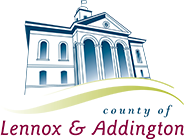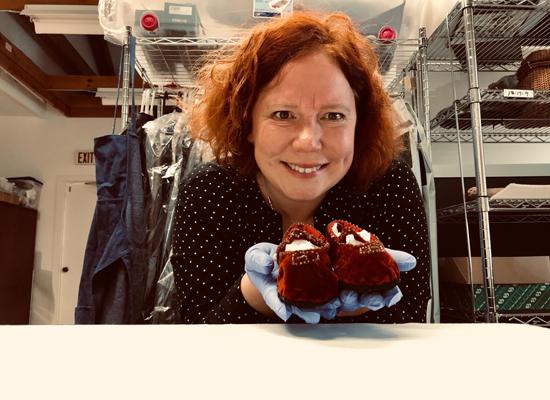
A Little“Shoe And Tell”
Confessions of a Curator
I cannot believe how fast the spring is flying by. We have just successfully celebrated our first long weekend of the summer and our thoughts are leaning towards the heat of the sun, toes in sand, water splashes, end of school, and the exciting plans of our summer vacations! Yes, even this weary curator is planning some time away to enjoy the sounds of the ocean and the excited awes of my children as we go whale watching in the Bay of Fundy this summer.
While summer is generally a time of fun and mental shutdown for students- it is status quo for most adults. In the museum world, the summer often lends itself to additional grant funding to employ university students to assist museums/archives/libraries/art galleries with projects that would otherwise be on hold until staff can get to it- and let’s face it- this could mean years.
This summer, the museum was fortunate to receive a grant from Young Canada Works to hire a university student to help me with our collection. A museum collection is catalogued similarly to a library – in that every object in the collection is assigned a number and inputted into a database to help track its provenance, location, condition, exhibition durations, and donor information. Our collection has close to 14,000 objects to track – wowzers!
How do you stay on top of it- honestly sometimes you don’t! Other projects pop up that take you away from the collection and a backlog begins to build. In the end, a curator always finds their way back to the collection - to classify, to research, to organize, to photograph, and to plan. This is the yellow brick road for any Collections Manager in the museum biz – it leads us to our happy place. This summer, our intern will help me review a portion of our collection, we will edit our database, we will sleuth object stories and get selected objects into the public domain for you to discover.
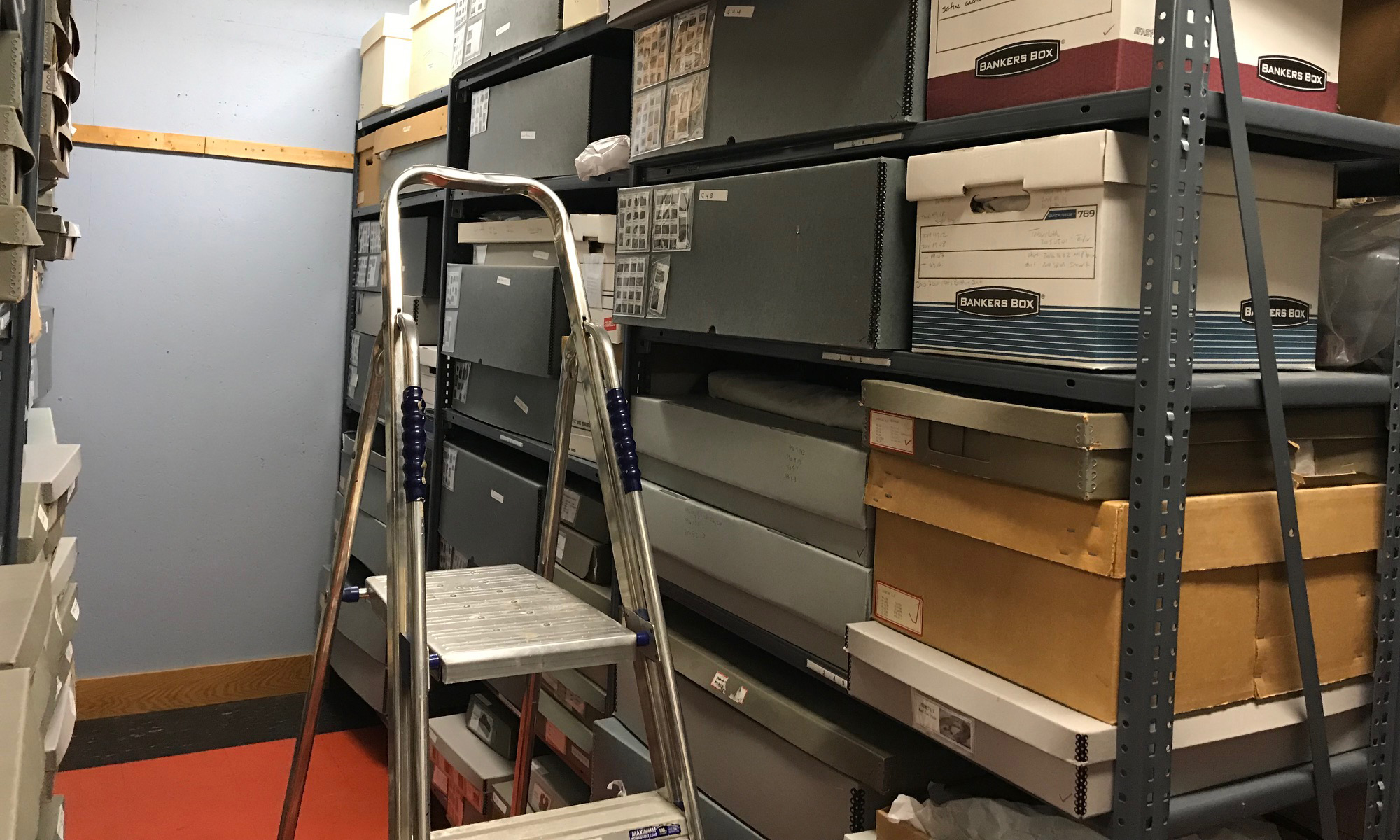
Our curatorial storage houses many shelving bays that have been sorted into relevant themes, boxed with accession numbers and shelf located in the database. This is an ongoing job in the museum world. As items are moved for exhibit, education, and photographing, it is critical they are returned to their location, otherwise hours are lost locating wrongly shelved items.
How do we do we start this project?
We figure out where we want to start- with this project we decided to focus on the last 5 years of records. It is the equivalent of about 500 objects- not all will be uploaded but all will be reviewed. The database is reviewed to ensure our paper records actually match what is in the database. Once we are happy – we decide what objects are going to be uploaded. The object’s story is the most important component to any museum collection.
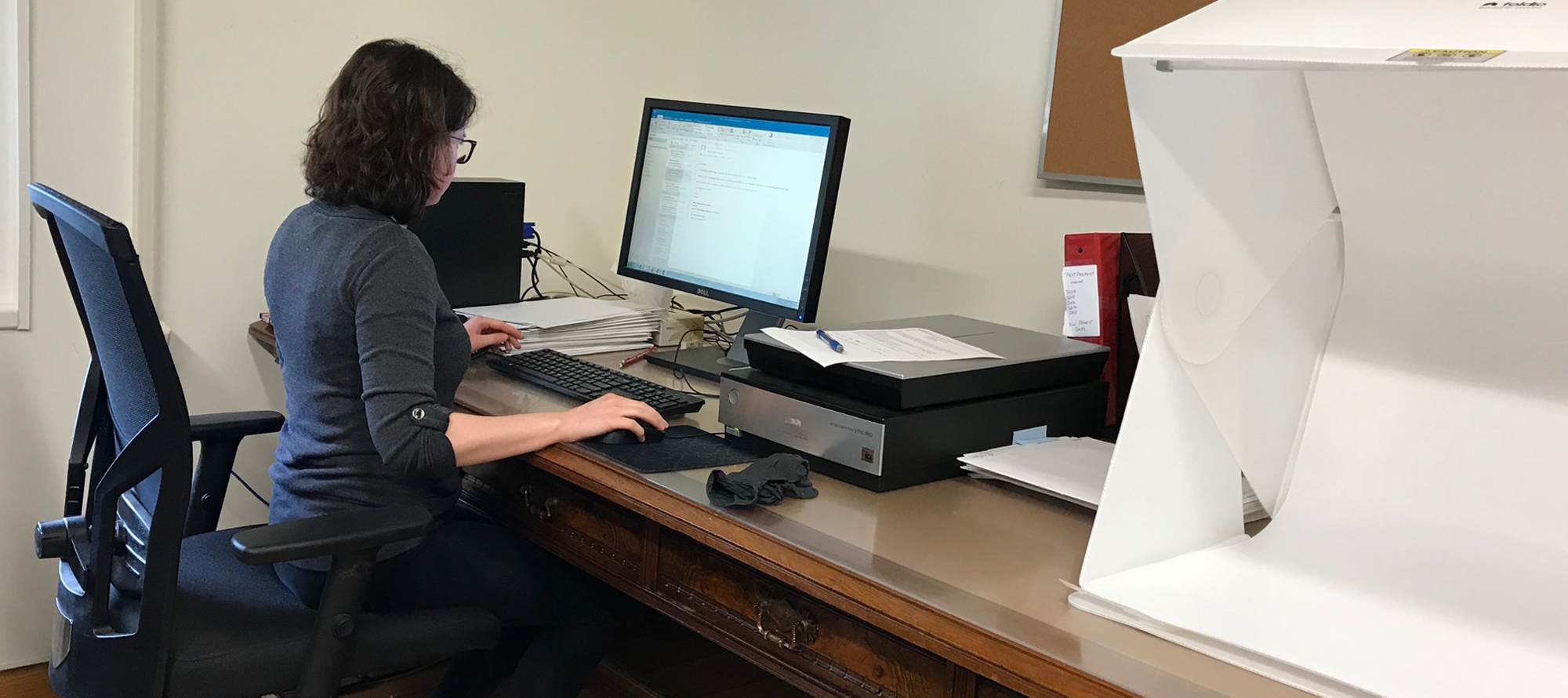
Alannah, our summer intern, is reviewing the accession entries to ensure accuracy and to sort the list for online uploading.
The object is pulled from storage so that we may begin the process of including it in the online database. We are usually given a solid genealogical reference at the time of receipt. Aside from the provenance, a curator or registrar will also examine the object for any other stories that can be gleaned from it -for example – who manufactured the item, what is it made out of, what does it tell you about the time it came from- this information is not only interesting for the general public but is highly useful to the curator who develops the museum exhibits and education programs.

The artifact is located and placed on a cart and put in the queue for photography.
The shoebox that holds the little shoes placed safely on the cart waiting to be examined and their delicate details photographed.
The curator becomes a “history detective”
With our thinking caps on we go in search of the story. Where do we go for this for information? We are fortunate at L&A County to house our own archives. Aside from the provenance given to us at the time of donation, we scan newspapers, family files, and photographs to build our object stories. From there we may delve into business indexes, land records, and vital statistics not extrapolated from family files. We may also use secondary sources within our curatorial libraries and reliable websites.
These little red shoes were worn by Doris Wells, who was born in 1923. Doris’s family lived in the Camden area. She married Bill Vesterfelt, who worked at the Strathcona Paper Company in the 1960s. Doris died in 2013 and the little shoes were donated to the museum shortly after by her sister. Unfortunately, we do not have a photograph of Doris, a photo is a terrific aid in making the objects more personal.
These shoes are in very good condition. I suspect these weren’t worn very much – most likely best occasions and remember these are baby shoes, how much ground coverage does a pair of baby shoes actually get? They are made from plush velvet and have small glass beads sewn on the vamp, straps, and sides. They are delicate and special little shoes.
The provenance tells us the L&A connection, but sometimes the object can speak to us about life at the time it was used – popular trends, economy, and social issues. These little shoes are in the Mary Jane style. A popular style even today, but what we discovered with a little digging, is that the term “Mary Jane” comes from the popular comic strip Buster Brown (1902) and his friend Mary Jane, who always wore this strappy style of shoe. Sleuthing these fun facts makes this job so much fun!
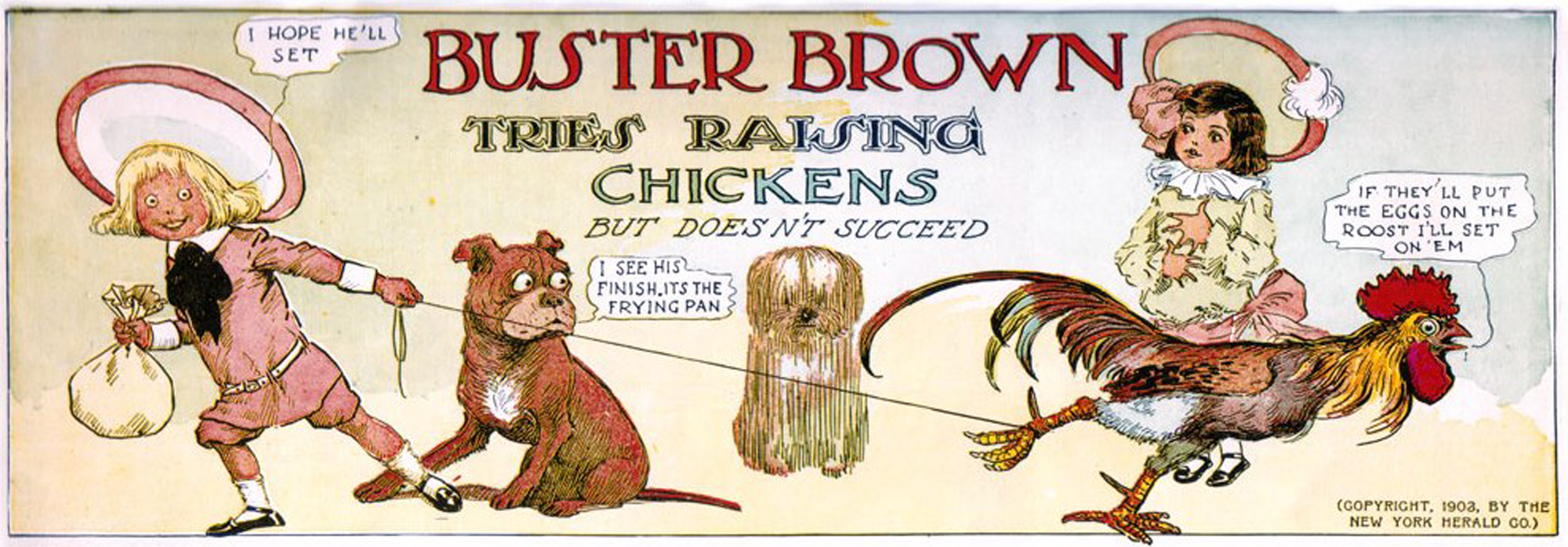
©1903, New York Herald Co.
kyleredente.blogspot.com
Once we have filled out the story, the object is photographed- carefully capturing all the small details. A detailed photograph will later reduce the physical handling of the object- we no longer have to take it out of storage every time we need to reference it, we can use the photos. This leads to long term conservation.
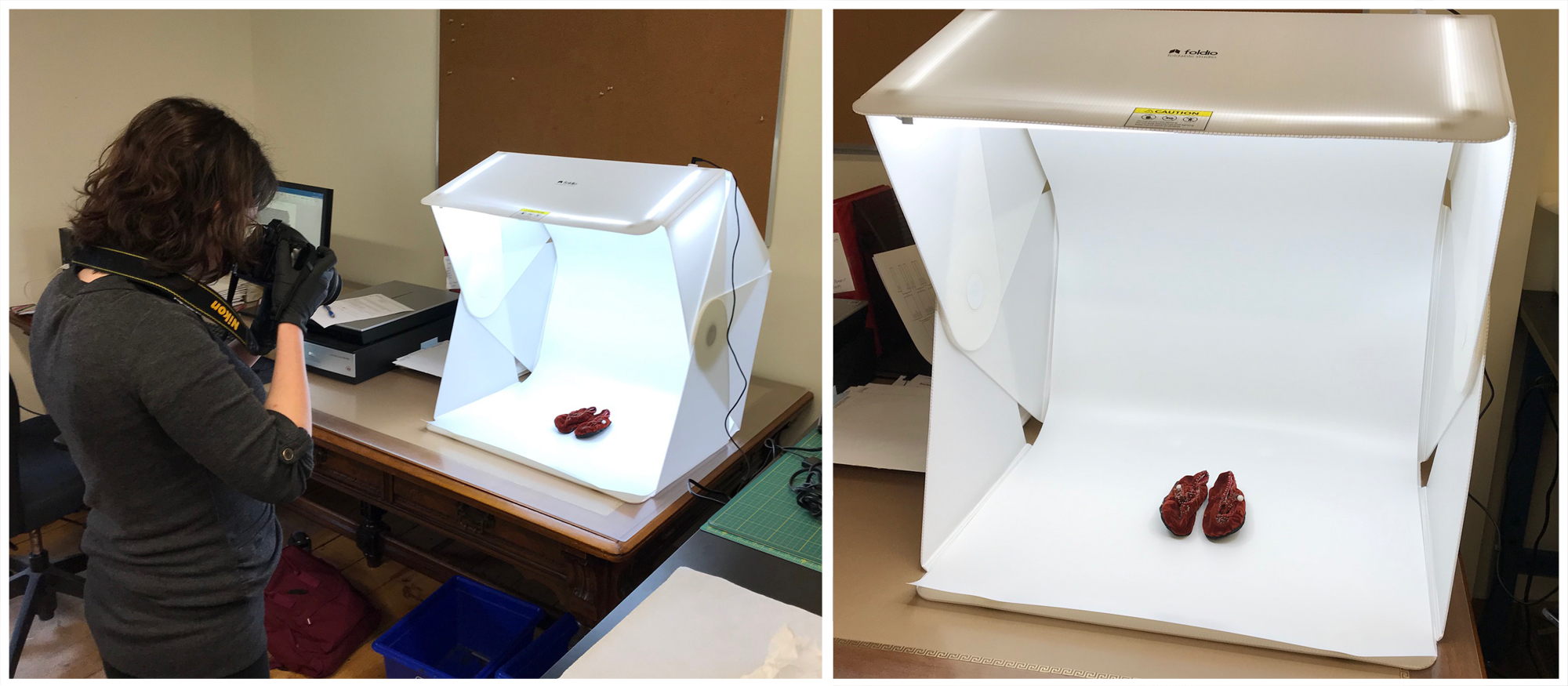
The images are added to the accession entry- the entry is reviewed and marked for upload. Once the upload is complete – the public can enjoy it online. We have started to upload, it’s a small portion for now, but the online collection both archival and museological can be discovered here at https://lennoxaddington.pastperfectonline.com/
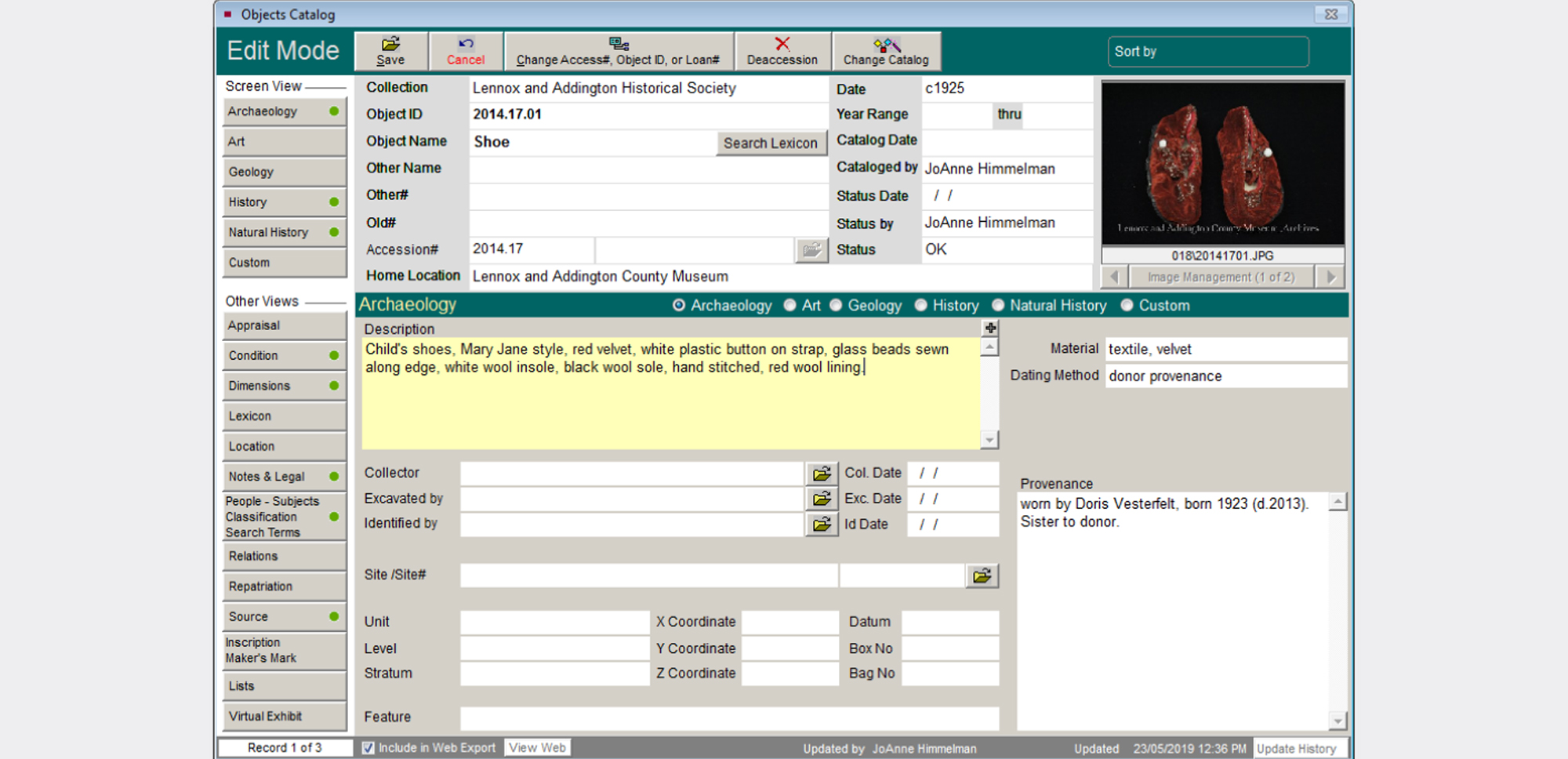
Our PastPerfect database is our main tool in organizing all the information related to the museum collection. As new information is discovered about objects, we can edit the entry. It also lets us track condition, location, exhibitions, donor information, and conservation treatments
Working with the collection takes time, patience, thoroughness, and a love for historical details. Our massive collection will not be digitized overnight. I know it will be years, and even then it won’t be finished. I fully realize that I will be retired, enjoying the beaches of Bali, and my successor will be working with the collection, digitizing, and readying the collection for whatever wonderful new technology awaits, in the mean time I am going to enjoy it. I will slow down and embrace the history around me- and remind myself, that someday- my time, my era- will one day be housed within museum walls, and I want someone to care for it, the way I am caring for my parent’s and grandparent’s history today.
I am pleased to introduce our summer intern – Alannah MacGregor. As we work through our collection, she is going to be a big help this summer. The museum is grateful for the support of the Canadian Museum Association and the Young Canada Works program for this summer opportunity.
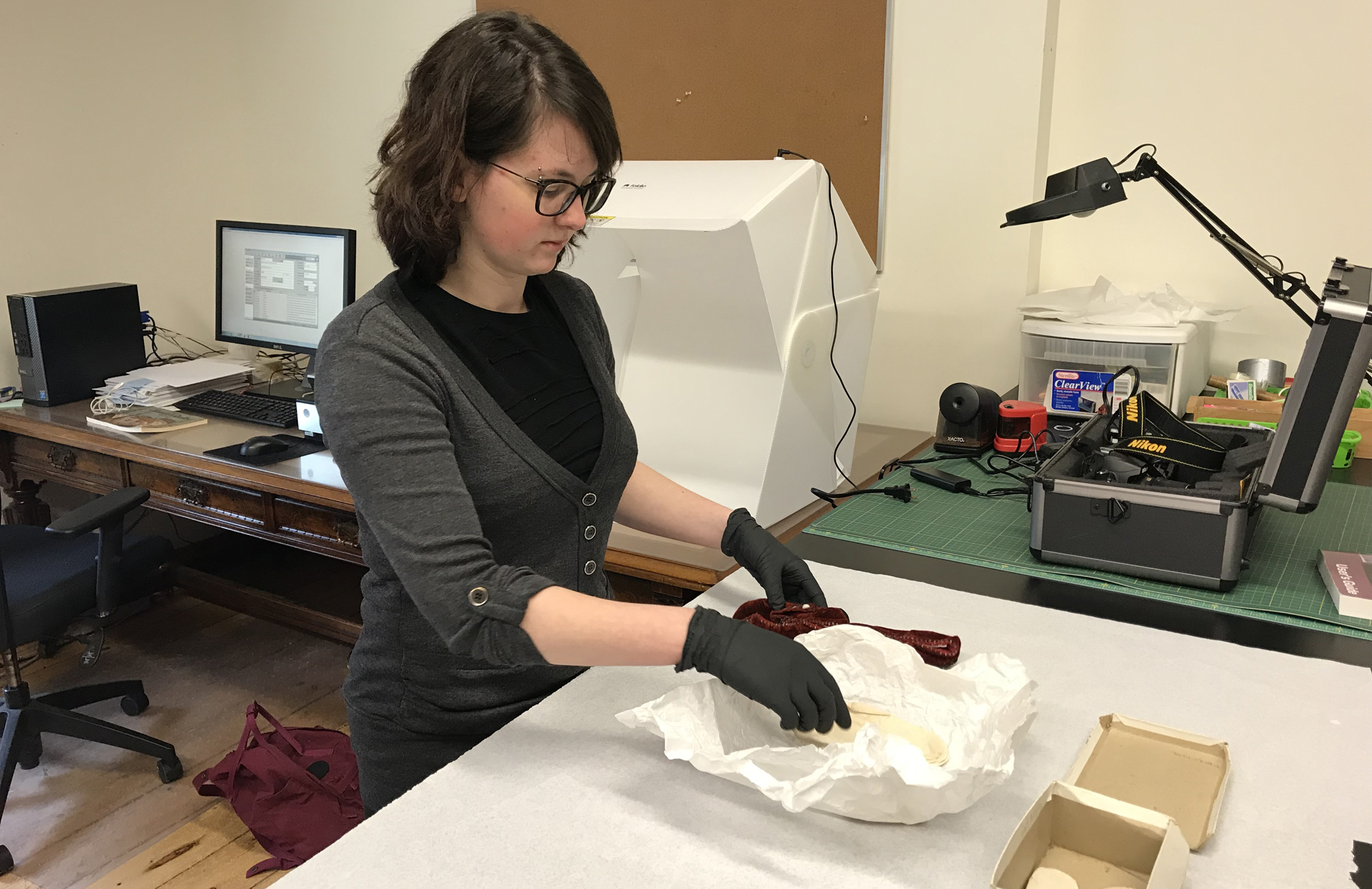
About Our Intern
I am currently a student at Algonquin College in the Applied Museum Studies program and will be starting in the third year of the program come September. My interest in the Lennox and Addington County Museum came from wanting to know more about my home county as well as wanting to work with a diverse collection. I would like to go into collections management so the opportunity to work on this project as a collections assistant is excellent for me, as I am getting to learn about how collections management works outside of the classroom.
I was further interested in the position as it is a chance to expand my knowledge of historical collections as my educational background is in science. I am excited to become familiar with the collection and to find out the stories that go with the artifacts being featured. I feel like this is an important project, as I believe it is the stories that go with the artifacts that are important to people, and finding those stories, to me, is something worth doing.
